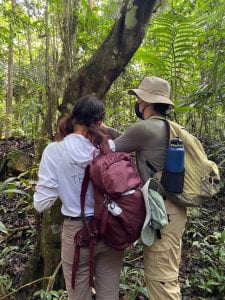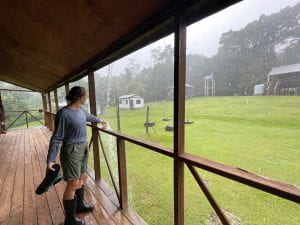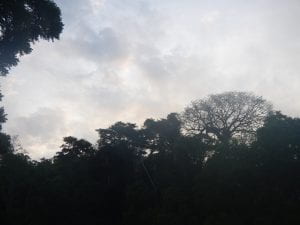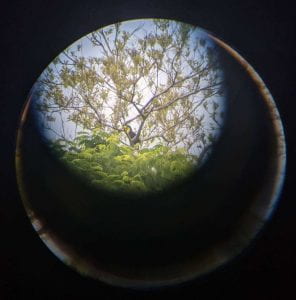Today we started off our last day in Las Cuevas by collecting our arthropod pitfall traps and sorting through the data in the morning. We found that there were more insects on the forest floor than in the canopy but the we were wrong about the canopy arthropods would be more attracted to the nitrogen rich trap. Afterwards, some people started our poster while me, Dr. Correa, and a few others sped hiked through the motion camera trap trails to collect them and get the data. It was super fun to speed hike through and see the same plants and areas of trail in a completely different way. Now that we didn’t have to worry about biasing data placement, etc., I was able to hike and just enjoy it as a hike itself. What’s even better is that it started to rain pretty hard once we finished the steep uphill of Bird Tower Trail so we were nice and refreshed by the time we returned to the station. The rain was also beautiful to watch and listen to, the ponds slowly filling up and preparing themselves for the many frogs that will soon inhibit them.
After we finished up packing and were waiting for the vans, one of the station managers Darrio pointed out that you could hear what sounded like hundreds of Mexican Burrowing Toads croaking from the wallows/frog pond area. A few of us decided to check it out and it was so cool. Once you step into the pond area, it was a 360º surrounding of the frogs croaking. Sadly we didn’t see any as they are burrowed in the ground but it was still really cool to hear them as the wet season kicks in.
Once we left Las Cuevas and made our way to the hotel, I was able to still spot lots of epiphytes. Since settling in our new rooms, I have identified lots of Tillandsia spp. and Philodendron hederaceum. It’s pretty cool to see that they still thrive outside of the forest – and who knows, maybe I’ll be able to spot some back in Houston (in the wild or as house plants) 😉
– Sophia







